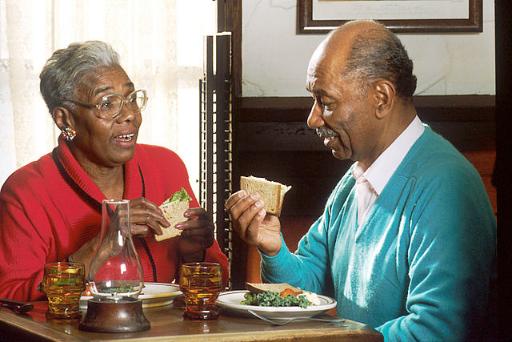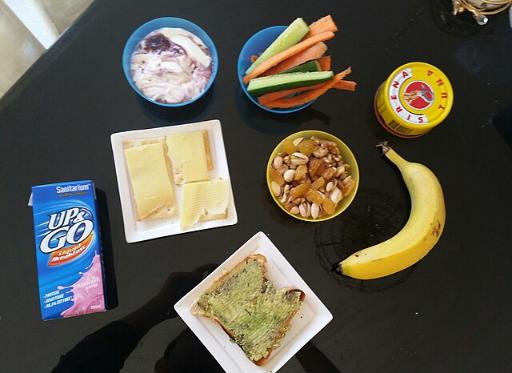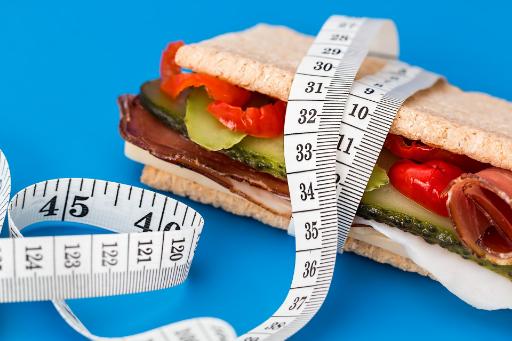What is a healthy and balanced diet?
Healthy eating is not about deprivation or unrealistic expectations. It’s about feeling great, having more energy, and improving your overall health and mood. By making small, manageable changes to your diet, you can experience these benefits and more.
Healthy eating doesn’t need to be complex. If you’re overwhelmed by the myriad of contradicting nutritional and diet tips available there, it’s not just you. There’s a good chance that for every person who says a certain food is healthy for you, you’ll hear exactly the opposite. While certain foods or nutrients have been proven to have an effect on mood, the general diet is the most crucial. The foundation of a healthy lifestyle is to substitute processed foods with natural ones whenever you can. Food in a way that’s similar to what nature intended for it will make a massive change in the way you think, perceive, and feel.
Utilizing these guidelines, you will be able to make sense of the haze of confusion and learn to plan and stick to a healthy, balanced, diverse, and healthy diet that’s just as good for your brain as it is good for your body.
The basic principles of healthy eating

Although some extreme diets might suggest the contrary, we all need an appropriately balanced intake of fat, protein, and carbohydrates, as well as vitamins, fiber, and minerals, to maintain an optimum body. There is no need to cut out certain food groups out of your daily diet. Instead, choose the most nutritious options in every category.
Protein is not just a source of energy, it’s a mood booster and cognitive enhancer. While excessive protein intake can be harmful to those with kidney issues, recent studies suggest that many of us, especially as we age, could benefit from more high-quality protein. And you don’t have to rely solely on animal products. A variety of plant-based protein sources can meet your body’s needs.
Fat. Different types of fat are not the same. Even though bad fats could ravage your diet and increase the chance of developing certain diseases, Good fats can protect your heart and brain. Healthy fats, such as omega-3s – are crucial to your physical and mental well-being. Making sure you include more healthy fats in your diet can improve your mood, increase your overall health, and reduce your waistline.
Fiber. Consuming foods that are high in fiber from the diet (grains, fruits, vegetables, nuts, beans, and seeds) will help you remain regular and reduce your risk of developing heart disease, stroke, and diabetes. It can also help improve your skin and help you lose weight.
Calcium. Along with contributing to osteoporosis and bone loss, a lack of calcium in your diet could cause depression, anxiety, and sleep problems. No matter your age, gender, or race, it is essential to incorporate calcium-rich foods into your diet. Limit the foods that are depleted in calcium and get enough magnesium, Vitamin K, and D in order to help calcium do its work.
Carbohydrates are among the body’s primary fuel sources. However, the majority are derived from complex, unrefined carbohydrates (vegetables and whole grains, fruits) instead of sugars and refined carbs. Reducing your intake of white bread or pastries, starches, and sugars can help avoid rapid spikes in blood sugar levels, changes in energy and mood, as well as an accumulation of fat, particularly at the waistline.
Switching to a healthier diet
Transitioning to a healthier diet is not about perfection or drastic changes. It’s about making small, manageable adjustments over time. You don’t have to give up all your favorite foods or do everything at once. By taking it one step at a time, you’re setting yourself up for success and showing yourself that you have the power to make positive changes.
The best approach is to implement a few minor adjustments at a time. Making your goals small will allow you to achieve more over time without feeling depleted or overwhelmed with a massive overhaul of your diet. Consider the process of preparing a healthy diet as a series of small, easy steps like adding salads to your daily diet at least once a day. When your small steps are a habit, you can continue adding healthier alternatives.

Set yourself up to be successful.
To ensure your success, you should simplify things. A healthier lifestyle isn’t a necessity. Instead of getting too obsessed about counting calories, for instance, consider your food choices in terms of color as well as variety and freshness. Avoid processed and packaged foods, and focus on fresh ingredients as often as you can.
Create more meals. Making more meals at home can allow you to keep track of the food you eat and be aware of what’s in your food. You’ll consume fewer calories and stay clear of the chemicals such as sugar, added sugar, and bad fats in packaged and takeaway food items, which can make you feel exhausted, bloated, and uneasy and can exacerbate symptoms of stress, depression, and anxiety.
Make the necessary adjustments. If you are cutting down on harmful food items in your diet, it is important to substitute them with healthier alternatives. The replacement of trans fats that can be harmful with healthy fats (such as swapping fried chicken to grilling salmon) can make a significant impact on your overall health. Making the switch from animal fats to refined carbohydrates, however (such as swapping your breakfast bacon to donuts), isn’t going to lower the risk of developing heart disease or help improve your mood.
Look up the label. It’s crucial to know what’s in your food because manufacturers usually hide huge quantities of sugar or harmful fats in packaged foods, even foods that claim to be healthy.
Pay attention to the way you feel after eating. This will help establish healthy eating habits and tastes. The healthier your food choices consume, the better you’ll feel following a meal. The more unhealthy food you consume, the more likely you will be uncomfortable, nauseated, or tired of energy.
Drink lots of water. Water is a great way to flush your system of toxins and waste products; however, many people are in a state of dehydration, which causes fatigue, lack of energy levels, and headaches. It is commonplace to confuse thirst for hunger, and drinking plenty of water can aid in making better choices regarding your diet.
Moderation is essential to a healthy diet.

What is moderate? In essence, it’s eating enough food that your body requires. You should be content at the end of your meal. However, you should not feel stuffed. For a lot of us, moderate eating means eating fewer calories than we are now. However, it doesn’t mean you have to eliminate your favorite foods. Breakfast with bacon every week, for instance, can be considered moderate when you pair it with a nutritious dinner and lunch, but not if you pair it with a bag of donuts and sausage pizza.
Do not consider some foods that are “off-limits.” When you eliminate specific foods from your diet, it’s normal to want them more. You’ll feel like a failure when you do give in to the urge. Begin by reducing the portion sizes of food items that are unhealthy and then not eating them often. As you decrease your intake of unhealthy foods, you may notice you crave them or imagine them as occasional treats.
Consider smaller portions. Serving sizes have risen in recent years. For dining out, select the starter option instead of the main course, or share a meal with a companion and avoid ordering supersized food items. When you’re at home, visual cues can assist in determining the size of portions. The portion of your fish, meat, or chicken ought to be as big as the deck of cards, and half the amount of rice, potato, or pasta is roughly equal to the volume of a standard light bulb. Suppose you serve your meals on smaller plates or bowls to trick your mind into believing that it’s an extra large portion. If you’re not satisfied after the meal, try adding more greens and leafy vegetables or end the meal with a fruit.
Be patient. It is important to take a moment and consider food as a source of nutrition, not as a drink to slurp down during meetings or while driving to collect your children. It only takes some time for your brain’s signal to tell your body that it’s been fed enough, so take your time eating and stop eating when you feel satisfied.
Have a meal with friends whenever it is possible. When you eat alone, in particular in front of a television or computer, it can lead to excessive eating.
Reduce snack food consumption at home. Be aware of the food items you keep in your pantry. It’s harder to maintain a healthy diet when you’ve got unhealthy snacks and sweets on hand. Instead, make sure you surround yourself with healthy options, and then when you’re ready to indulge yourself with a unique reward, head out to purchase it right then.
Stop emotional eating. It’s not always about eating to satisfy our hunger. A lot of us use food to ease tension or deal with unpleasant emotions like sadness or loneliness. If you can learn healthier methods to deal with stress, emotional issues, and emotions, you can take back control of your food choices and the emotions you feel.
It’s not just about what is in your food; it’s also about when you take your food.
Take a breakfast meal, and then eat small meals during the course of your day. Healthy breakfasts can boost your metabolism. In addition, eating small, nutritious meals will keep you energized throughout the day.
Beware of eating too late in the evening. Eat meals earlier and fast for 14-16 hours before breakfast in the morning. Research suggests that you should eat only during times of activity, and giving the digestive tract an extended break throughout the day could aid in regulating your weight.
Include more fruits and vegetables in your diet.

Fruits and vegetables are both low in calories and are nutrient-rich, which means they are brimming with vitamins, minerals, antioxidants, as well as fiber. Try to eat the recommended daily intake, which is five portions of vegetables and fruits, and it will give you energy and assist in cutting down on unhealthy food choices. A serving is roughly half one cup of uncooked vegetable or fruit, or smaller bananas or apples, for example. The majority of us have to eat twice the amount that we consume each day.
In order to increase your intake, follow these steps:
- Incorporate antioxidant-rich berries into your breakfast cereal of choice
- Enjoy a mix of sweet fruits like mangos, oranges, and grapes, as well as pineapple, for dessert.
- Swap your usual rice or pasta side dish for a colorful salad
- Instead of snacking on processed foods, try snacking on fresh vegetables like carrots, snow peas, or cherry tomatoes, along with hummus that is spicy or peanut butter
How can you make delicious vegetables?
Steamed and plain salad vegetables can quickly turn boring, but there are a lot of possibilities to impart flavor to the vegetable dishes you serve.
Bring color. In addition, brighter and more deep-colored vegetables have more antioxidants, vitamins, and minerals. They also alter the flavor of food and make it more appealing to the eye. Color your meals with fresh or sundried tomato, beets, and carrots that have been glazed and roasted green squash wedges or sweet, vibrant peppers.
Get salad greens to life. The leaves can be branched out further than lettuce. Arugula, kale, broccoli, mustard greens, and Chinese cabbage are brimming with nutrients. For a flavorful addition to your salad greens, consider adding olive oil to the salad and a spicy dressing, or sprinkle with chickpeas and almonds and bacon, goat cheese, or parmesan.
Fill your craving for sweets. Naturally sweet vegetables, such as carrots, beets, sweet potato, yams, bell peppers, onions, and squash – add the sweetness to your meals and help reduce cravings for sugar. Include them in stews, soups, or pasta sauces to give satisfying sweetness.
Cook your green beans, broccoli, Brussels sprouts, and asparagus in innovative ways. Instead of steaming or boiling these healthy dishes, you can try grilling, roasting, or pan-frying them with chili garlic, flakes of chili shallots, mushrooms, or onions. Also, marinate them in tangy lime or lemon prior to cooking.







